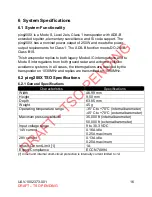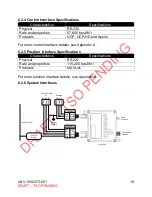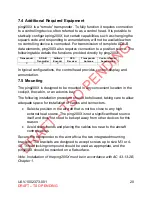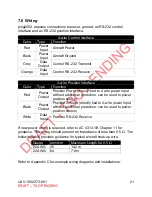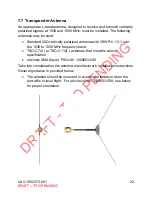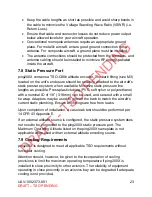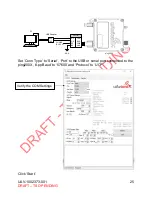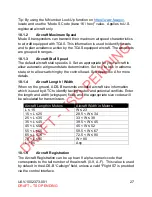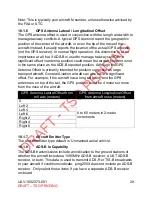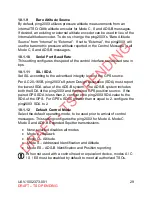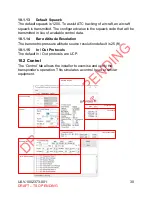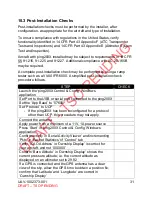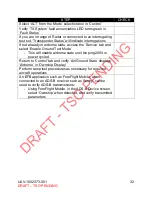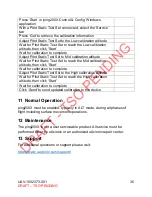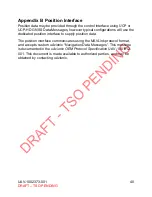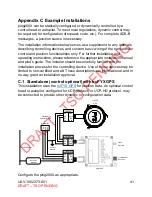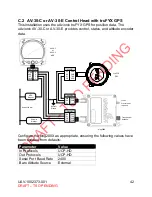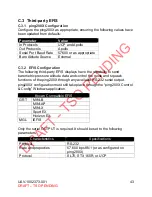
UAV-1002373-001
28
DRAFT
– TSO PENDING
Note: This is typically your aircraft N-number, unless otherwise advised by
the FAA or ATC.
10.1.6
GPS Antenna Lateral / Longitudinal Offset
The GPS antenna offset is used in conjunction with the length and width to
manage taxiway conflicts. A typical GPS does not report the geographic
position of the center of the aircraft, or even the tip of the nose of the
aircraft; instead, it usually reports the location of the actual GPS antenna
(not the GPS receiver). In normal flight operation, this distinction is of no
importance at all, but if ADS-B is used to manage taxiway conflicts, a
significant offset in antenna position could mean the aircraft footprint is not
in the same place as the ADS-B reported position. Although the GPS
Antenna Offset is primarily intended for position correction on large
transport aircraft, General Aviation aircraft can also have a significant
offset. For example, if the aircraft has a long tail boom and the GPS
antenna is on top of the tail, the GPS position could be 4 meters or more
from the nose of the aircraft.
GPS Antenna Lateral Offset from
roll axis (meters)
GPS Antenna Longitudinal Offset
from aircraft nose (meters)
0
0 to 60 meters in 2-meter
increments
Left 2
Left 4
Left 6
Right 2
Right 4
Right 6
10.1.7
Aircraft Emitter Type
The aircraft emitter type default is
‘Unmanned aerial vehicle’.
10.1.8
ADS-B In Capability
The ADS-B transmissions include an indication to the ground stations of
whether the aircraft includes a 1090MHz ADS-B receiver, a UAT ADS-B
receiver, or both. This data is used to transmit ADS-R or TIS-B broadcasts
to your aircraft if conditions indicate. ping200X does not include an ADS-B
receiver. Only select these items if you have a separate ADS-B receiver
on-board.



